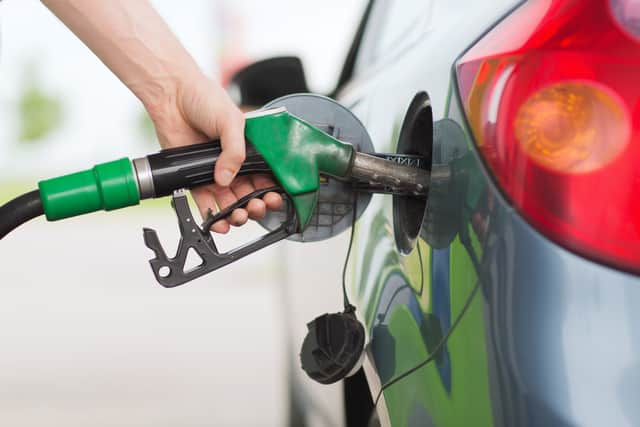Can you mix E5 and E10 fuel? Difference between petrol grades - what happens if you put both in same car tank
and live on Freeview channel 276
Petrol is at the forefront of many drivers’ minds with prices remaining stubbornly high as they struggle with other rising living costs.
There is also still confusion around E10 fuel, which replaced E5 as the country’s standard unleaded almost a year ago.
Advertisement
Hide AdAdvertisement
Hide AdThe new type of fuel became the default “regular” petrol last September, with E5 remaining on sale in super unleaded form at filling stations which offer more than one grade of fuel.
Most modern cars can run safely on E10, which is now sold nationwide as regular 95 RON, but with E5 also still available as higher-grade 98 RON drivers have a choice of which fuel to use. There are also some filling stations which stock only E10 and others in rural areas that still supply “regular” E5, leading to questions around how safe it is to mix the two types of unleaded.
Can I mix E5 and E10 petrol?
Although E5 and E10 have different compositions, the Department for Transport says it is entirely safe to mix the two grades.
Like mixing regular and super unleaded in the days of E5 petrol, mixing E5 and E10 in the same tank will not do any harm to your vehicle.
Advertisement
Hide AdAdvertisement
Hide AdIn its guidance on E10, the DfT says: “If your vehicle is compatible with E10 petrol, there’s no reason you can’t mix the 2 grades of petrol (E5 97+ and E10 95+). It’s perfectly safe to mix them in the same tank or fill up with E5 if E10 is not available.”
What is the difference between E5 and E10?
Both E5 and E10 are unleaded petrol but E10 contains a higher proportion of bio-ethanol - up to 10% compared with a maximum of 5% in E5.
This higher bio-ethanol content - obtained from renewable sources - helps to reduce the CO2 emissions from vehicles but slightly reduces their fuel efficiency.
Why has E10 petrol been introduced?


The Government says the introduction of E10 petrol will help reduce transport-related air pollution.
Advertisement
Hide AdAdvertisement
Hide AdIt estimates that changing to E10 will cut the UK’s CO2 emissions by 750,000 tonnes a year - equivalent to removing 350,000 cars from the road.
Can all cars run on E10 petrol?
The vast majority of modern cars can run safely on E5 or E10 but there are up to 600,000 older models in the UK which aren’t compatible with the newer fuel.
Any car built since 2010 is compatible with E10 fuel and most built since 2000 can also use the fuel without damage. However, some models from between 2000 and 2010 face problems using the fuel, as do hundreds of thousands of older and classic cars.
What if I have to use E10 in an incompatible car?
Advertisement
Hide AdAdvertisement
Hide AdSome drivers have claimed to experience poor running when filling up with E10 but a single fill-up of E10 is unlikely to cause lasting damage to incompatible cars.
The damage caused by E10 to older cars largely comes about due to the long-term effects of the ethanol on perishable components, so a single emergency fill-up won’t do too much harm.
The DfT advises: “Using a single tank of E10 petrol in a vehicle that is not compatible should not be a major problem. Just make sure you fill up with the correct E5 (‘97+ octane) petrol grade next time.
Unlike putting petrol into a diesel engine, you shouldn’t need to drain the tank. On a one-time basis, your vehicle will not suffer engine damage as a result. Prolonged use of E10 petrol in a non-compatible vehicle, however, may cause harm and is not recommended.”
Comment Guidelines
National World encourages reader discussion on our stories. User feedback, insights and back-and-forth exchanges add a rich layer of context to reporting. Please review our Community Guidelines before commenting.
